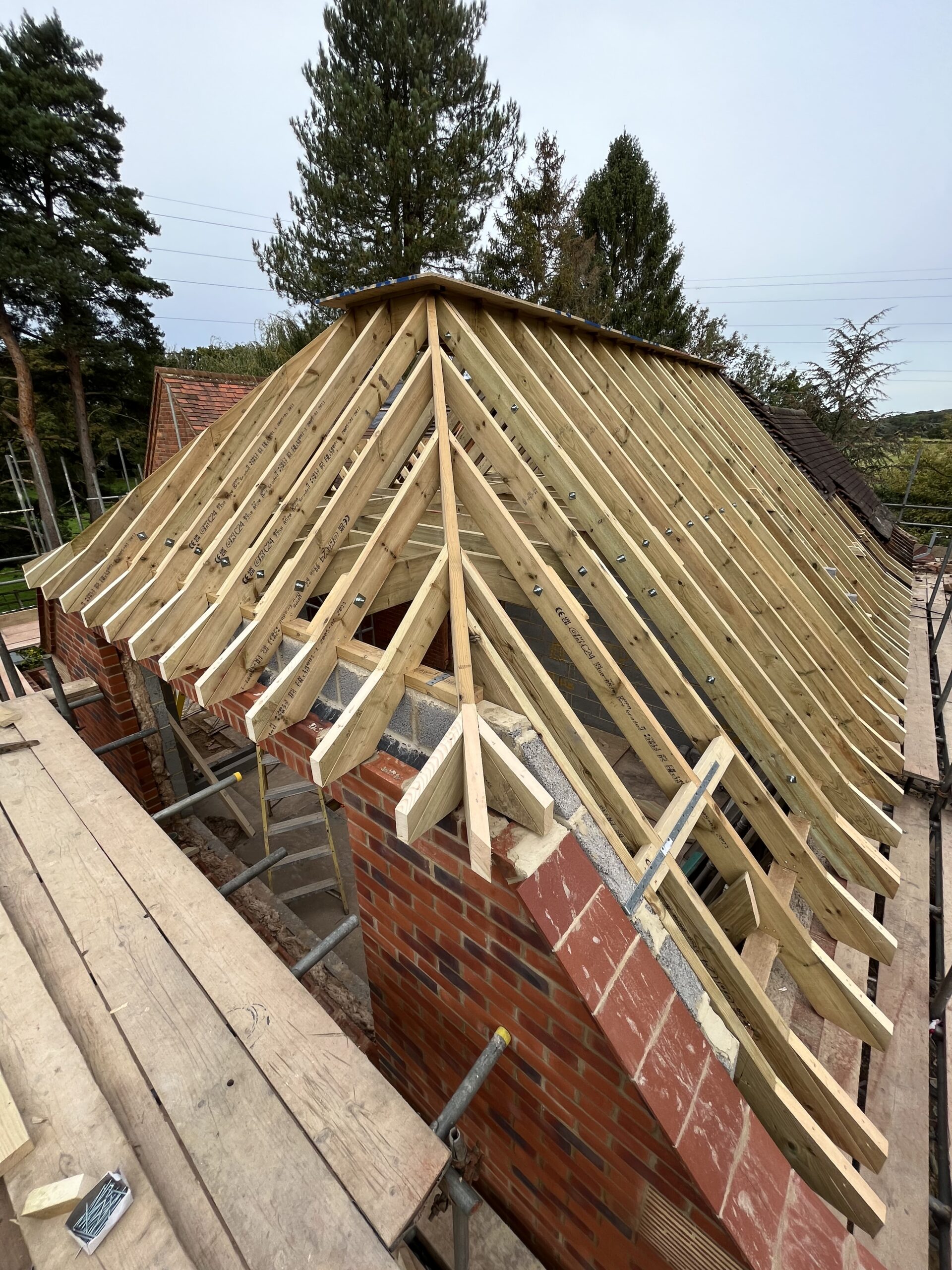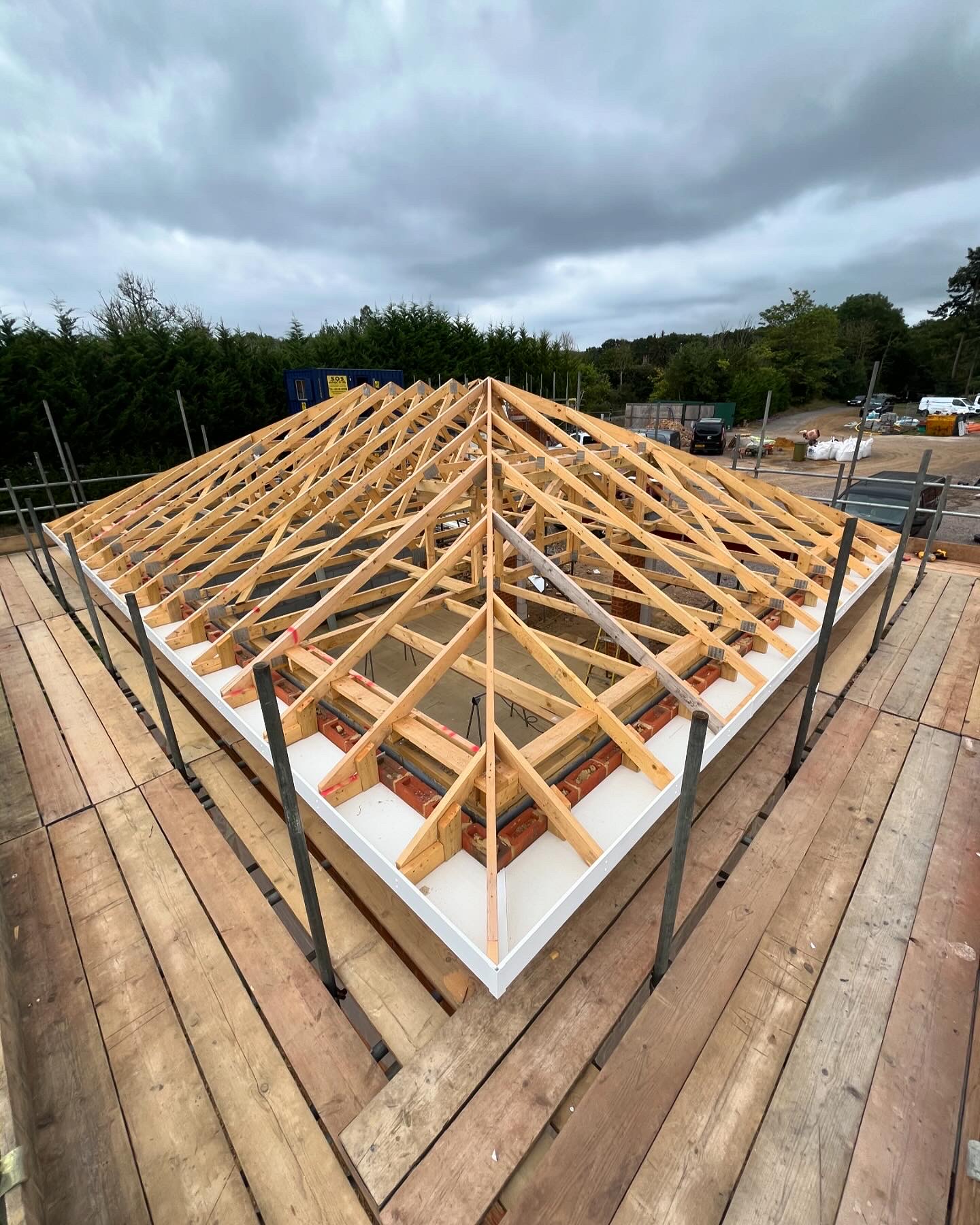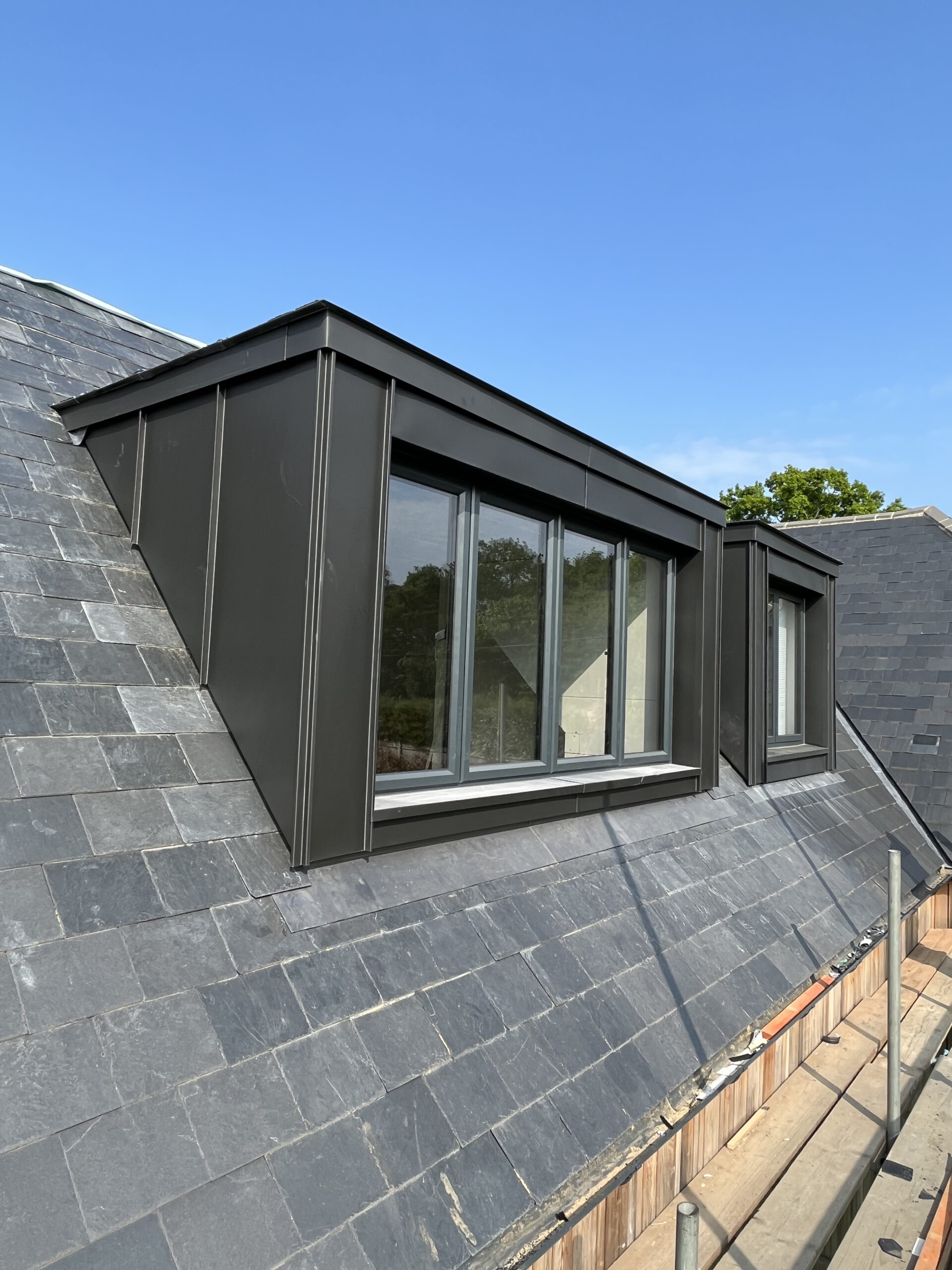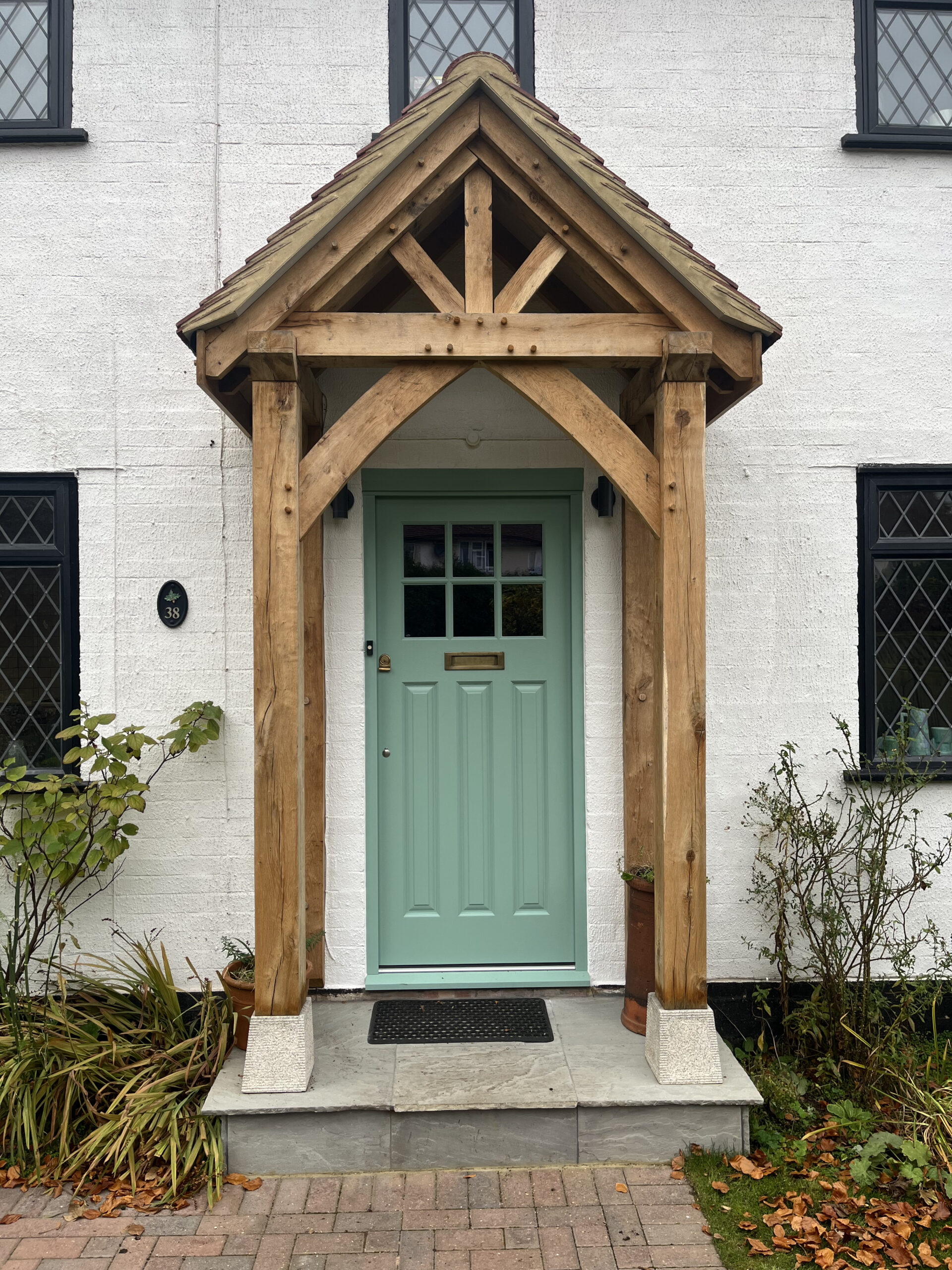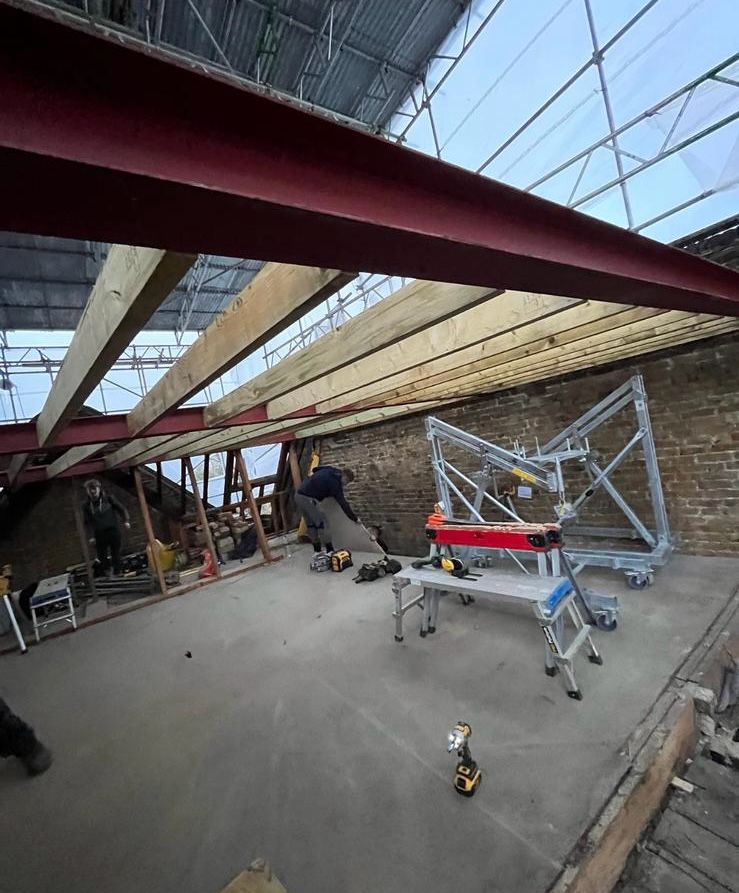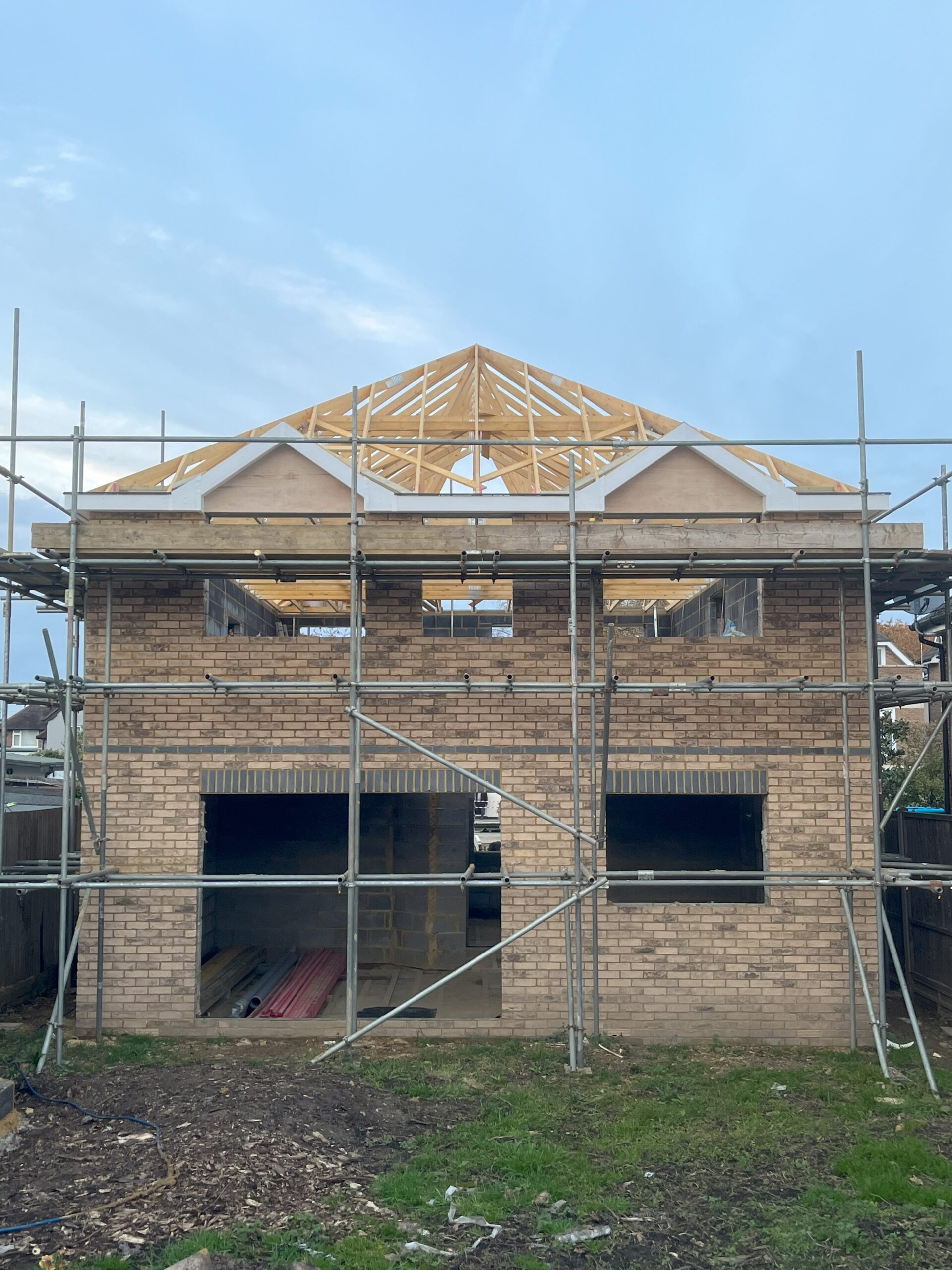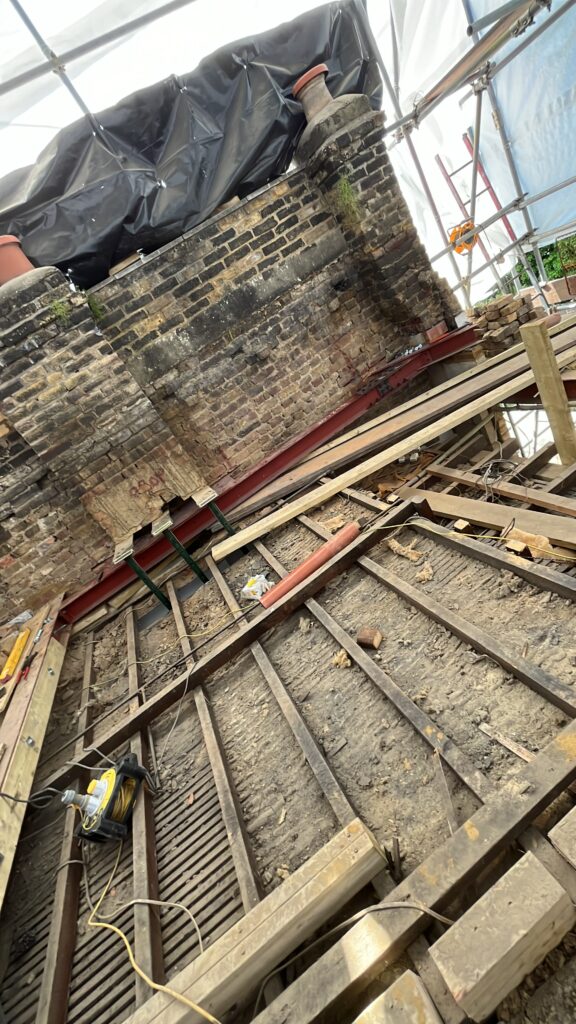
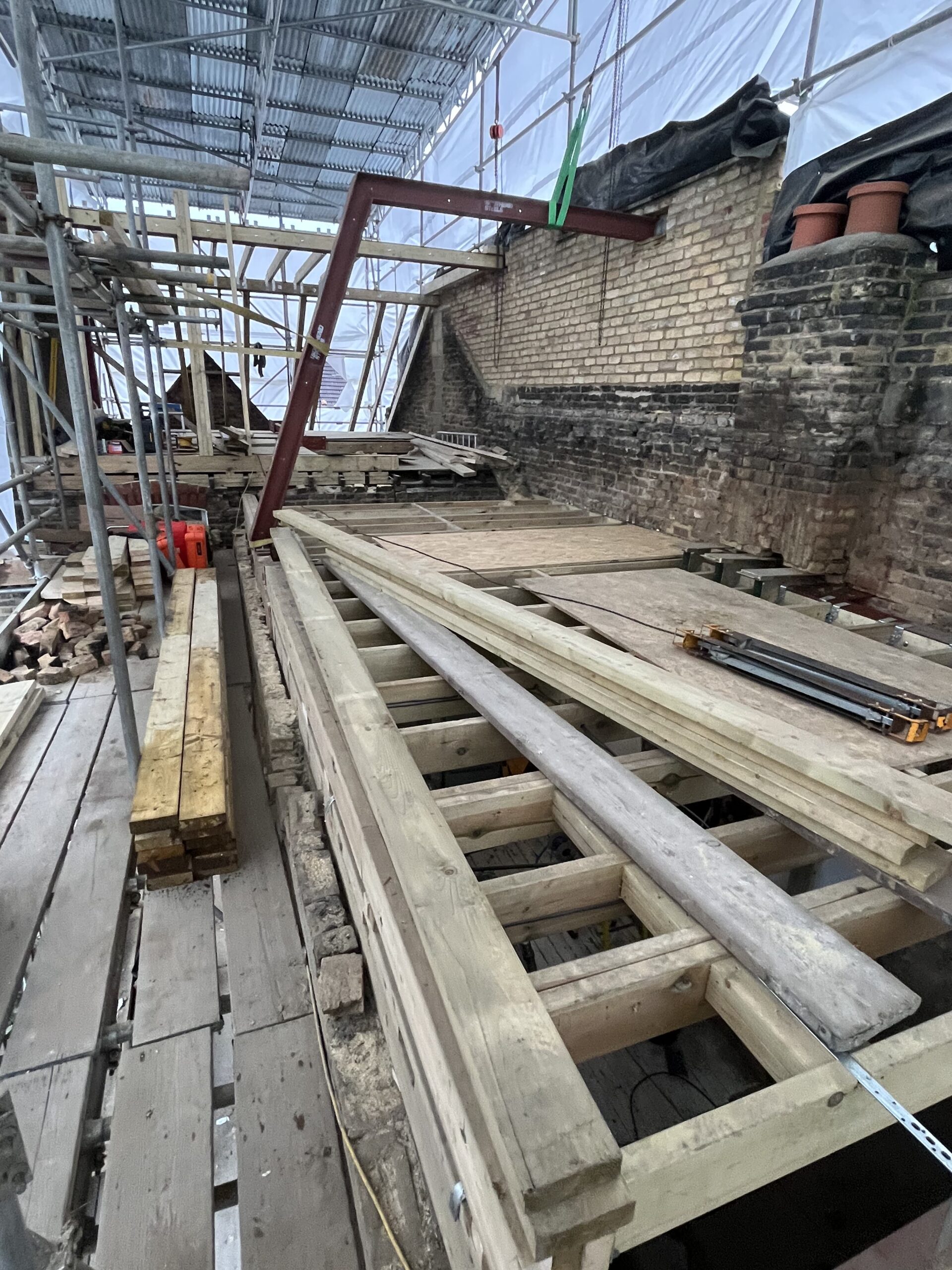

STEEL RSJ INSTALLATION
Installing Steel RSJs (Rolled Steel Joists) is a crucial step in structural modifications, particularly when creating open-plan living spaces. These steel beams are designed to support significant loads, ensuring both safety and structural stability when altering a building’s layout.
This process is especially beneficial for homeowners looking to remove internal walls while maintaining the integrity of the structure. RSJs provide essential reinforcement, distributing weight evenly and preventing structural failure.
The typical process for RSJ installation involves several key steps:
• Site preparation: Ensuring clear access for RSJ delivery and preparing the area for installation.
• RSJ delivery: Transporting beams to the site via crane or manually manoeuvring them into position.
• Lifting into place: Using hoists, genie lifts, or cranes to carefully position the RSJs at the required height.
• Alignment and leveling: Ensuring beams are perfectly level and positioned to bear the new loads.
• Structural support: Providing a minimum bearing of 100mm at each end, either bolted to bearing posts or resting on appropriate structural supports.
• Final securing: Fixing the RSJs in place with bolts, brackets, and other structural reinforcements to ensure long-term stability.
Common materials used in this process include steel RSJs for primary load-bearing, bolts and fixings for secure connections, and support posts or padstones to distribute weight effectively.
Each step in the installation process is essential for ensuring the RSJ functions as intended, providing strong and reliable structural support. If you need specific RSJ installation examples or expert guidance, feel free to ask!

